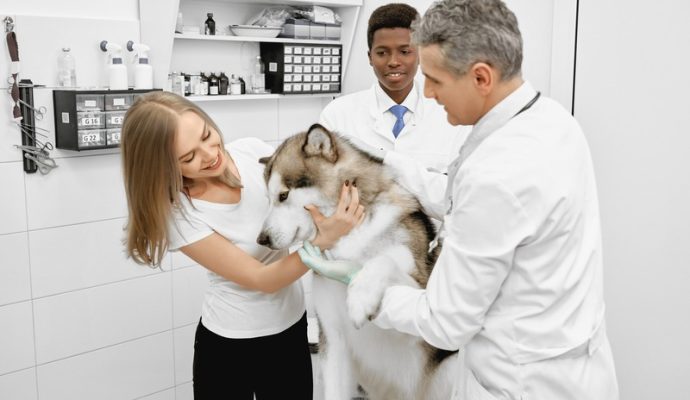As a pet owner, witnessing your furry friend in discomfort or distress due to injury is never easy. Fortunately, advancements in veterinary medicine have introduced innovative treatments like cold laser therapy that provide a non-invasive and pain-free solution to aid in pet recovery.
Think of it as a gentle ray of hope, quite literally, that can alleviate your pet’s pain and accelerate their healing process.
The Science Behind Cold Laser Therapy
At its core, this therapy is rooted in a process known as photobiomodulation. This fancy term simply implies that light energy, when directed at the body’s tissues, can spur a series of biological reactions leading to reduced inflammation, pain relief, and expedited healing.
While it may sound like something straight out of a sci-fi novel, it’s a scientifically backed technique that has aided furry patients for years.
Understanding Photobiomodulation
- Definition and explanation of how it heals tissue at the cellular level
- The impact of non-thermal photons on injured areas
- Cellular responses like increased ATP production leading to tissue repair
The Role of Different Wavelengths
- Role of red wavelengths in surface-level healing
- Near-infrared wavelengths for deeper tissue penetration
- The importance of wavelength selection based on the injury
Common Pet Injuries Treated with Cold Laser Therapy
Laser therapy doesn’t play favorites when it comes to treating our four-legged companions. It’s used to address a variety of ailments, from sprains and strains to the chronic aches of arthritis. Its broad application has made it an indispensable tool in modern vet clinics looking to offer animals a speedy return to their happy, playful selves.
Soft Tissue Injuries
These are common in pets, and cold laser therapy shines in speeding up recovery. For instance, a torn ligament that could sideline your pet for weeks might see a reduced healing time thanks to the therapy’s ability to boost local blood circulation and stimulate tissue repair.
Arthritis and Joint Pain
It’s heart-wrenching to watch a pet struggle with the chronic pain of arthritis. Thankfully, cold laser therapy offers comfort without side effects, enhancing joint mobility and reducing inflammation. Regular sessions could mean the difference between a pet that winces with each step and one that trots happily by your side.
The Cold Laser Therapy Procedure for Pets
What to Expect During a Session
Think of a session much like a spa day for your pet, except instead of massages, there are soothing lasers involved. It typically goes something like this:
- Your pet gets comfy in their treatment area.
- A vet technician gently applies the laser to the affected area.
- Sessions usually last only a few minutes, and pets often appear relaxed.
Safety Measures and Precautions
Safety is paramount, so all wear eye protection. Pets get special goggles, too—think doggy aviators, but for health. Rest assured, a veterinarian will assess whether your pet’s condition makes it an ideal candidate for laser therapy first.
Pet Wellness Plans in Louisa, KY
When it comes to pet health, preventive care is just as important as treatments like cold laser therapy. Opting for pet wellness plans in Louisa, KY, ensures your beloved companions receive regular check-ups and vaccinations, helping to ward off illnesses and keeping them in tip-top shape.
Advantages of Cold Laser Therapy in Veterinary Care
The list of perks is a long one, with the stars of the show being its non-invasive nature and lack of side effects. Unlike surgeries that might come with lengthy recoveries or medications with potential negative reactions, cold laser therapy stands out as a gentle alternative that can provide substantial relief without additional risks.
The Recovery Process and Outcome Evaluation
Monitoring Recovery and Adjusting Treatment
Just as you would tailor an exercise routine to fit changing fitness goals, recovery plans may need tweaking as your pet heals. Frequent evaluations help vets decide whether to increase the intensity of the laser or alter the frequency of sessions. Think of it as a custom-fit path to recovery designed for your pet’s unique needs.
Long-Term Benefits and Maintenance
Talk of long-term advantages isn’t just hopeful conjecture; it’s based on observed outcomes. In the same way that exercise has prolonged health benefits, regular laser therapy could stave off future issues or at least manage chronic conditions more effectively.
Integration with Other Rehabilitation Therapies
Cold laser therapy works well with companions like physical rehabilitation. It’s like the peanut butter to the jelly—both are great alone, but together, they make a sandwich that’s much more satisfying and effective for recovery.
Compassionate Animal Clinic
In the realm of animal care, the essence of compassion cannot be overstated, and clinics such as the Tri County Animal Clinic exemplify this virtue. Here, they understand that treatment entails not just addressing the physical ailments but also providing a soothing environment that tends to the emotional well-being of our pets.
Cold Laser Therapy for Cats
While often associated with dogs, feline friends stand to gain just as much from this treatment, making cold laser therapy for cats a viable option. It tackles the same range of issues, ensuring your whiskered companions get back to their curious and playful selves faster than you can say ‘meow.’
Conclusion
Capturing the essence of cold laser therapy is like trying to describe the warmth of the sun on a cool day—it’s better experienced than explained. But those who have seen their pets’ lives transformed by this gentle yet powerful treatment know of its far-reaching glow. It is a beacon in veterinary medicine, promising pain relief and swift recoveries for our cherished four-legged family members.




